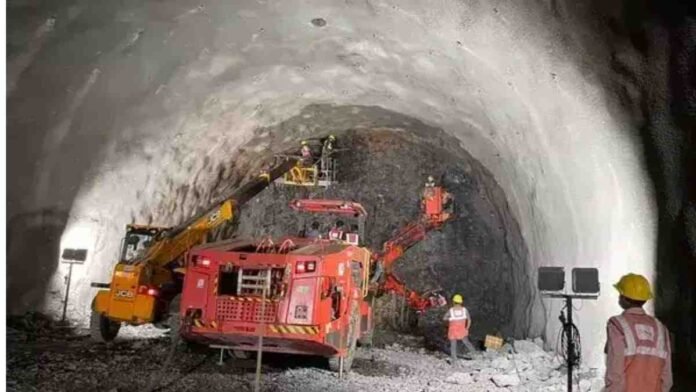This cutting-edge technology marks a substantial shift from traditional ballasted tracks with its promises of greater durability, reduced maintenance costs, and increased safety for railway operations. With Ballastless Track Technology, ECoR is demonstrating its dedication to updating its railway systems by August 14, 2024, in order to comply with contemporary standards and support future expansion.
With ballastless track technology, a more substantial and continuous base takes the place of traditional ballast, which is crushed stone or gravel used to support railroad sleepers. The railway sleepers and rails in this system are supported and stabilized by concrete slabs or other cutting-edge materials. Less maintenance, improved load distribution, and enhanced stability are the main benefits of ballastless trains, especially in tunnel sections where conventional ballast can present challenges.
Advantages of Tunnel Ballastless Tracks
Enhanced Durability
High humidity and possible water intrusion are just two of the challenging circumstances that ballastless tracks are intended to survive. Its robustness is essential to preserving track integrity over time, particularly in tunnels where ballast may move or become dislodged.
Reduced Maintenance
One of ballastless track systems’ biggest advantages is their lower maintenance needs. Ballastless tracks provide a more stable and low-maintenance alternative to ballasted tracks, which require routine maintenance to ensure correct alignment and stability. This is especially helpful in tunnel sections where maintenance can be expensive and difficult.
Improved Safety
Ballastless tracks offer stability, which lowers the possibility of track movement and related mishaps. Because tunnel operations involve confined spaces and difficult working conditions, increased safety is especially important.
Longer Lifespan
Ballastless tracks have a longer lifespan, which results in fewer interruptions and cheaper long-term expenses. The robustness of the technology and its capacity to sustain alignment over extended periods of time make the railway system more dependable.
ECoR Implementation
The East Coast Railway’s adoption of this technology is a major advancement in the modernization of railroad infrastructure. In a number of tunnel sections, ECoR has already started deploying ballastless track systems, concentrating on regions where conventional ballast systems have shown to be less successful.
Recent reports state that the implementation is a component of ECoR’s larger plan to improve the effectiveness and security of its railway system. It is anticipated that the switch to ballastless tracks will enhance operational performance and provide a model for other regions thinking about making similar upgrades.
Future Implications
The effective implementation of ballastless track technology by ECoR establishes a model for other railway networks in India and possibly beyond. The technology will probably be used more widely in different rail projects as it develops further and shows its advantages. The developments may bring about a dramatic change in the way railroads approach track design and upkeep, encouraging more environmentally friendly and effective railroad operations.
In conclusion, ECoR’s tunnels represent a significant advancement in railway infrastructure with the installation of cutting-edge ballastless track technology. This action offers several



